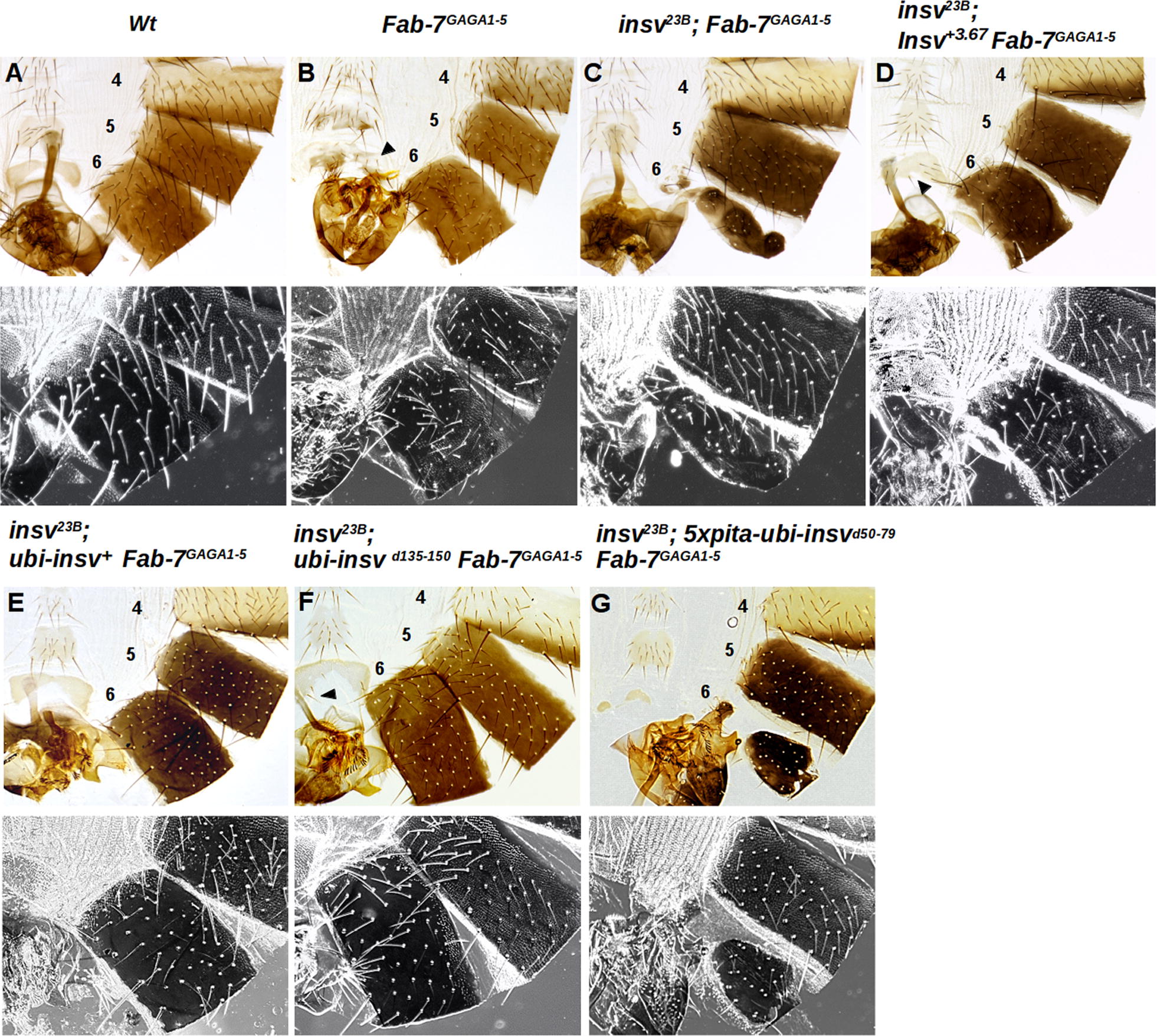Fig. 7.

In vivo architectural functions of wild-type and mutant Insv proteins. A Adult abdominal cuticle preparations of a wild-type male. The fifth and sixth tergites are pigmented, and the A6 sternite is recognizable by the absence of bristles and a banana shape. Trichomes are visible in the dark field (black and white lower panels) and cover the entire surface of the A5 tergite, while for the A6 tergite the trichomes are found in thin stripes along the anterior and ventral edges of the A6 tergite. B Homozygous males with a sensitized genetic background of Fab-7: Fab-7GAGA1-5 (for description see the text). C When the insv null allele, insv23B, is combined with Fab-7GAGA1-5, this disrupts the boundary function of the Fab-7GAGA1-5 replacement and A6 is misspecified. Males have a mixed GOF and LOF phenotype. A6 is partially transformed into A7 (GOF transformation), but at the same time, the residual A6 cuticle has morphological features characteristic of A5 (trichomes visible in the dark field, LOF transformation). D Rescue of the mutant insv23B; Fab-7GAGA1-5 phenotype with a genomic rescue construct insv+3.67. The genomic Insv fragment restores the boundary function of Fab-7GAGA1-5. The A6 tergite is only marginally smaller than wild type, and the trichomes are usually limited to small patches. E–G Show the abdominal cuticles of males carrying the ubi rescue constructs in an insv23B; Fab-7GAGA1-5 background. E Wild-type ubi-insv+3.67 rescues all Fab-7GAGA1-5 boundary defects. Males have tergites and sternites that are indistinguishable from the wild type. F Rescue obtained with ubi-insvd135-150 construct. Although insv23B; ubi-insvd135-150 Fab-7GAGA1-5 homozygotes look almost wild type, A6 sternites typically have two or more bristles, indicative of a weak A6 to A5 transformation. G Rescue by the coiled-coil domain deletion transgene 5xpita-ubi-insv d50-79 is incomplete. The A6 tergites in insv23B; 5xpita-ubi-insv d50-79 Fab-7GAGA1-5 males are reduced in size and are irregularly shaped, as expected for a strong GOF transformation. The tergites also have small patches of trichome hairs in regions where they are absent in wild type, indicating that it is also a LOF transformation. Sternites are also much smaller than in Fab-7GAGA1-5 and unlike Fab-7GAGA1-5 are misshapen or absent altogether. The numbers 4, 5, and 6 indicate A4, A5, and A6 abdominal segments, respectively
